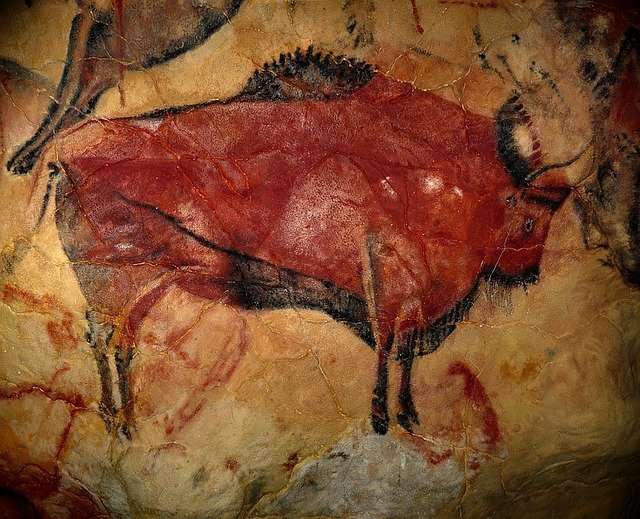It is a little bit of difficult to choose the right oil pastels for you. You can get a little bit confused with the different varieties available and how they are used. Well, it is just not at all hard to actually learn about oil pastels.
Trying out these tips will help you in buying the best oil pastels for your needs.
Oil Pastels for Beginners:
When you start out with oil pastels, it is better to go for larger pieces. This will help you learn how to blend, mix and layer colors easily. These can be used with an ordinary brush and water, so you can use them for all sorts of things. While painting, it is better not to blend oily pigments with dry ones as they do not mix well. Pigments should be mixed with Vaseline or even linseed oil so that they do not dry off too quickly. Addition of a little bit of fixative will also slow down the process of drying off of colors.
There are many benefits of using oil pastels as compared to regular crayons or chalk pencils. Oil pastels are quite soft and creamy in texture which makes them easy to apply on paper. They remain workable for a long time, which makes them more
There are many artists who love to use oil pastels for their artworks. Oil pastel art is more popular than ever because of the many advantages it has over other art mediums. It is a medium that gives you a lot of freedom and gives you the chance to be very versatile in your work.
Looking for the best oil pastels can be stressful though. There are so many options and brands available on the market today. You want the best, but you do not want to break your budget. Here are some factors that you need to consider when choosing oil pastels:
1. Type of oil pastels
There are so many types of oil pastels nowadays that it can be overwhelming when looking for one that will fit your needs and budget. The first thing that you have to look at is the ingredients used in making the oil pastel sticks. There are those that have an odorless pigment while there are others with pigments that can sometimes smell bad. Some may even contain toxins which might be harmful if inhaled or ingested, especially to children and pets who might get a hold of these things. So it is best to avoid those kinds of oil pastels if you want something safe for your family’s health and for the environment as well.
I have been using oil pastels for almost a year now and I must say that I really love them. I have tried many brands during this time and I can say that I was never disappointed. There is a big variety of colors, size and texture to choose from, so you can find the right ones for your needs.
TUCO oil pastels are professional grade oil pastels – they are made of pure pigments, which means they are less than other brands, but they are also more expensive. I still think they are worth it because they give very vibrant colors and you can blend them easily.
The Viva Decor brand is more affordable and has more texture to make blending easier (but still not as much as TUCO). The colors are also not as bright as the TUCO colors (they look a little duller on paper), so if you want brighter colors, go with TUCO.
Viva Decor is my favorite oil pastel brand, because it fits my needs perfectly – bright colors, affordable price and nice texture. But if you can afford TUCO or if you prefer smoother textures for blending, then go for TUCO!
Oil pastels are among the most popular and widely used art supplies today. They are perfect for artists of all levels: from beginners to professionals. Oil pastels can be used in both kids and adult classes and they are also great for professional use.
Trying to figure out how to buy oil pastels can often be a difficult task. You want them to be good quality but you don’t want to spend a fortune either. It’s also important to know what type of oil pastels will work best for you and your needs as an artist.
There are many different types of oil pastels, so it’s important to know which ones will best suit your needs. Some artists like the softer, smoother color that you get with the Extra Soft Pastels, while others prefer the brighter colors and sharper lines that you get with Hard Pastels. If you draw or paint on a regular basis, it may be good to have both types of oil pastel available so that you have plenty of options when it comes time to create your next masterpiece!
In this post, we’ll be talking about oil pastels. Oil Pastels are one of the most popular and widely used art mediums out there. Oil pastels are easily transportable, have a great deal of color range and are fairly inexpensive.
Oil Pastels are used for many different techniques and styles, including realism, abstract and mixed media. They can be applied to many different surfaces including paper, wood and canvas.
If you’re interested in oil pastels, there are a few things you need to know. One of them is that they aren’t the exact same thing as oil paints. They do have some things in common, but they aren’t the same medium. If you try to do an oil pastel painting with all the techniques you’ve developed for using oil paints, you will end up frustrated and disappointed with the results. So it’s worth spending some time learning how to use them properly.
Tinting strength: You’ll also want to be aware of what we call tinting strength when choosing your colors. Tinting strength refers to the relative staining power of different colors of paint or pigment. The lower a color’s tinting strength, the less it will stain your paper; this is particularly important if you plan on doing any blending with watercolors (more on that below). In general, yellow tends to be weak in this sense; blues and purples are high-tinting strength colors.
Granulation: Finally, if you’re interested in using your oil pastels for underpainting (or just for applying washes, really), you should be aware of granulation. Granulation is an earthen quality that can be applied
Art is beautiful and fun, but as you may already know it also takes a lot of time and effort. The finished product is what people see and admire, but the creation itself has many steps that are often very tedious.
Trying to paint an oil pastel picture or any other landscape or portrait is a good example of this. You can’t start with the final product and work your way backwards; rather you must figure out the beginning, middle, and end all at the same time.
Oil pastels are a medium used by many artists that can help with this. They have been around for a long time but have become “new” to some people again because of their versatility in helping artists create many different textures and effects.
Many people who enjoy art creation have used oil pastels at some point in their career or as an artist’s tool in order to complete their art pieces.
The oil pastels themselves are made of pigments mixed into a binder; they come in either sticks or pencils depending on whether they are single color or multi-colored. The colors are very vibrant, bright and appealing to most eyes. The colors are also very smooth when applied, so any minute mistakes can be easily covered over without worry of “smearing”



